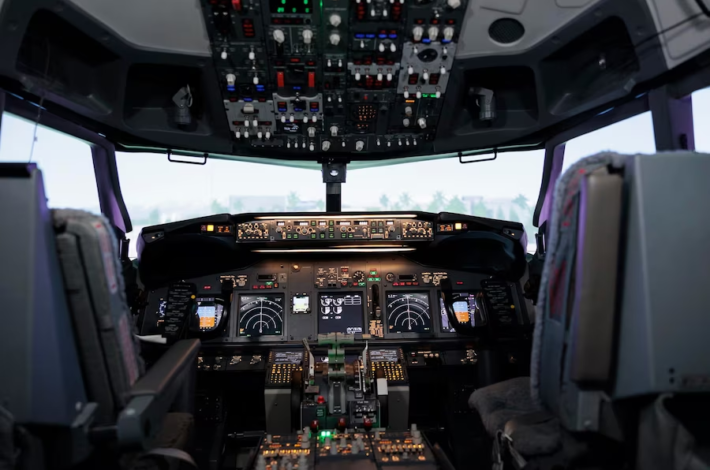
When it comes to aviation, accuracy, precision, and timing are of the utmost importance. One of the primary components that take these three critical aspects into account is the Estimated Time Enroute, widely known as ETE. The term forms an integral part of any flight operation, making it essential to grasp the full extent of its implications.
In the most basic terms, ETE refers to the projected time it will take for an aircraft to travel from its point of departure to its intended destination. This estimation does not consider any time spent on the ground or any potential delays at the gate before departure. ETE is fundamentally a time measure, based on the knowledge and calculations before the flight, which assists in creating a precise flight plan.
Decoding the ETE Calculation Process
The calculation of ETE is a complex process, involving a multitude of factors that can influence the total time of a journey. Some of the key elements that go into calculating ETE include:
- Aircraft Speed: The speed of the aircraft, typically calculated in knots, is a primary determinant. The make and model of the aircraft, along with its mechanical performance, significantly impact this element;
- Travel Distance: This refers to the total distance, in miles or kilometers, between the departure point and the arrival destination;
- Climb and Descent Rates: These are the times it takes for the aircraft to ascend to its cruising altitude and descend to the ground. These rates can vary greatly depending on factors such as the aircraft type, weight, and prevailing weather conditions;
- Wind Conditions: Wind can have a major impact on an aircraft’s speed and, consequently, the total travel time. Headwinds, blowing opposite to the aircraft’s direction, can slow it down, while tailwinds, blowing in the same direction as the aircraft, can speed it up. Therefore, wind speed and direction are vital elements in ETE calculations;
- Air Traffic Control (ATC) Routing: This encompasses the possible need for an aircraft to alter its planned route due to directions from ATC, influenced by factors such as traffic, weather conditions, or other unforeseen circumstances. Any change in route could affect the total distance travelled and consequently the ETE.
All these elements are fed into the aircraft’s Flight Management System (FMS) or a similar computational system. The system, using a complex algorithm, then computes the ETE considering all these variables.
Role of ETE in Flight Planning
ETE, with its intricate calculation, is a fundamental component of flight planning. An accurate ETE assists the flight crew in estimating the necessary amount of fuel for the journey. This understanding is vital, given that it is paramount for an aircraft to carry a sufficient fuel load to ensure a safe journey.
A detailed table demonstrating the interrelationship between ETE, fuel consumption, and various associated factors is shown below:
| ETE Factors | Role in Fuel Management |
|---|---|
| Aircraft Speed | Aircraft speed impacts the rate of fuel consumption. A faster speed may reduce ETE but increase fuel consumption. |
| Distance | The further the distance, the more fuel required, directly influencing ETE. |
| Wind Conditions | Tailwinds can reduce ETE and fuel consumption, while headwinds can increase both. |
| ATC Routing | Changes in route due to ATC directives can increase distance and ETE, requiring additional fuel. |
| Climb/Descent Rates | Longer times in climbing or descending phases can increase fuel consumption and ETE. |
Expanding the Scope: ETE Beyond Flight Planning
Beyond the initial planning, ETE plays an extensive role in various other aspects of a flight. Some of these areas include:
- Passenger Information: An accurate ETE provides passengers with a clear idea about their flight duration, aiding them in planning their in-flight time and post-flight activities;
- Airline Operations: From an operational perspective, an accurate ETE ensures the timely arrival of flights, leading to streamlined operations, less idle time on the ground, and enhanced customer satisfaction;
- Flight Dispatching: Flight dispatchers utilize ETE to keep track of the flight’s progress, making sure that the necessary support services (like refueling teams, ground crew, etc.) are ready when the aircraft arrives.
ETE Vs. ATE: A Comparative Analysis
In aviation, another term frequently used in conjunction with ETE is Actual Time Enroute (ATE). While ETE is an estimation of the time required for a journey, ATE is the actual time it took for the flight. Comparing ETE and ATE post-flight can provide invaluable insights into the precision of the initial ETE and assist in honing future ETE calculations.
Conclusion
ETE’s importance in aviation can’t be overstated. Its role extends beyond a mere flight timing estimation. It weaves itself into the fabric of flight planning, fuel management, passenger information dissemination, airline operations, and flight dispatching, making it a cornerstone of the aviation industry. By understanding ETE in depth, we gain critical insights into the intricacies of flight operation and the many variables that contribute to a successful journey.
FAQ
ETE is calculated by considering various factors, including aircraft speed, travel distance, wind conditions, ATC routing, and climb/descent rates. These are input into a flight management system, which uses a complex algorithm to calculate the ETE.
ETE helps in estimating the fuel requirement for a flight, which is critical for ensuring safety and efficiency. It aids pilots in managing fuel consumption effectively and mitigating risks of fuel emergencies.
ETE is the Estimated Time Enroute, an estimate of how long a flight will take from departure to destination. ATE, or Actual Time Enroute, is the actual time that the flight took.
ETE is vital for airline operations as it helps ensure flights arrive on time, contributing to efficient operations, less ground idle time, and improved customer satisfaction.